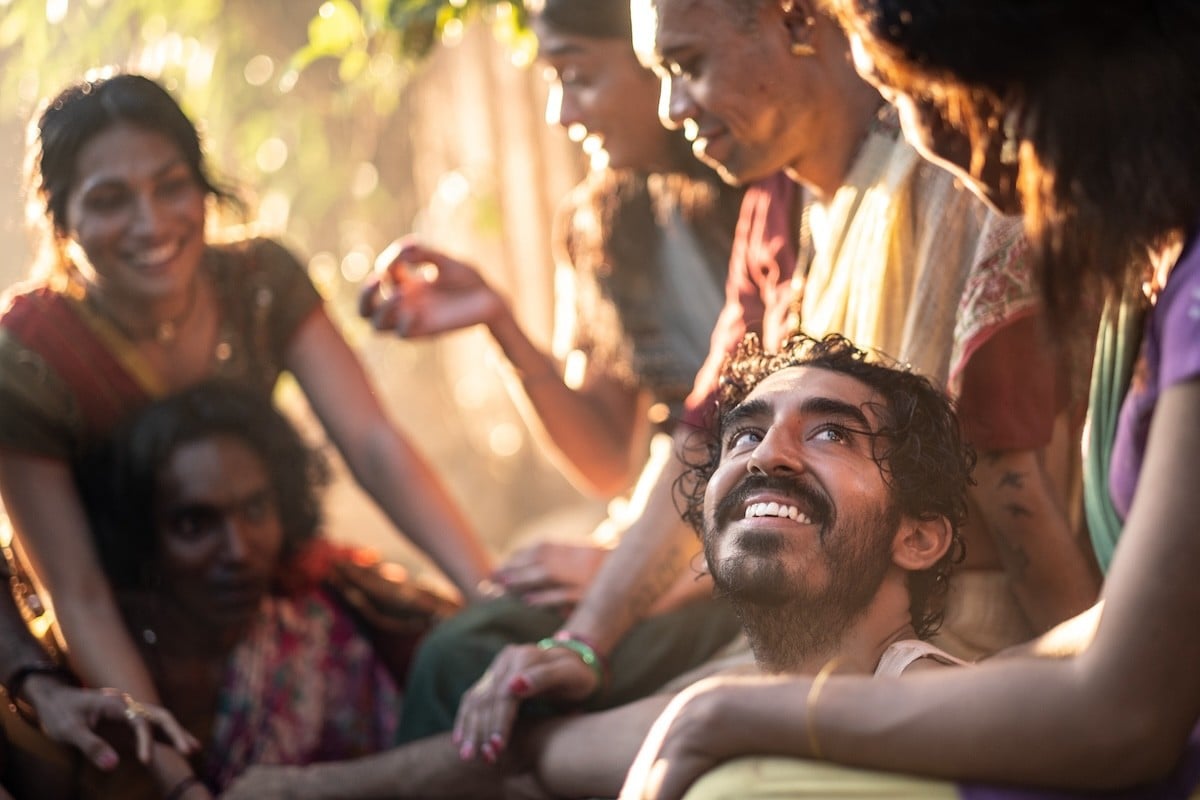When we are first introduced to the protagonist of Monkey Man — who is identified only as “The Kid” (Dev Patel) — he’s taking a savage beating in an underground fight club. Each night, he dons a ragged ape mask and plays the heel, allowing the fan-favorite champion to pummel him into a pulp, all to the enthusiastic cheers of a bloodthirsty crowd. If pressed, the Kid would probably insist that he’s just trying to make a buck in a world where the odds are stacked against the have-nots. In his own mind, meanwhile, this nightly ritual is a kind of training, preparation for a mission of vengeance that he's been slow-cooking for 20 years. What the Kid would never admit, even to himself, is that he’s grown so accustomed to pain, he might be starting to think he deserves to be perpetually broken, both physically and psychologically.
On paper, Monkey Man is as straightforward as action revengers get. As a child, the Kid dwelled in a rural Indian village with his single mother (Adithi Kalkunte), who delighted him with tales of the heroic monkey-god, Hanuman. This bliss was shattered forever on one fateful night when corrupt, sadistic men arrived to drive the villagers out and seize their land, by any means necessary. Two decades later, the Kid begins scheming his way in the inner circle of those same men to deliver his long-overdue revenge. It’s the sort of story that movie lovers have seen a hundred times before, and it unfolds without any significant twists or surprises, plot-wise. Initially, the Kid’s plan seems to be succeeding, but he fumbles while trying to make his big move, leaving him momentarily defeated. In this second act, he recovers and reaps some wisdom, and in the third he executes a refined and much bloodier plan on his enemies. Roll credits.
So why does Monkey Man — which is not only a star vehicle for Patel, but also his feature directorial debut — feel like such a breath of fresh air? Partly, it’s due to the actor’s raw performance. Rich characterization isn’t all that crucial in the roaring-rampage-of-revenge subgenre. However, so many action anti-heroes come off as quippy cartoons or stoic Übermenschen, it’s startling to encounter a protagonist like the Kid, who is obviously in such deep, intractable pain. His targets might be a monstrous police chief (Sikandar Kher) and the billionaire guru-mogul who pulls his strings, but the Kid’s real nemeses are his own traumatizing memories. Flashbacks to that tragic night 20 years ago often threaten to derail his vengeance, freezing him in the sweaty, trembling space between fight and flight.
That said, it’s not Patel’s haunted eyes — or his freshly sinewy physique — that leaves the strongest impression in Monkey Man. Rather, it’s the film’s invigorating, kinetic style, which thrashes the viewer with a whirlwind of color, motion and sound. As YouTube essayist Tom van der Linden has recently argued, the past decade of action filmmaking has been defined by the ascendency of pristine visual coherence and attention-grabbing technical execution over all other elements (sometimes even story). What was once radical now feels obligatory. Patel’s feature feels like something of a course-correction, being perhaps the first post-John Wick action thriller to offer a different aesthetic sensibility. (As if underlining its intent, the film even name-checks Chad Stahelski’s estimable, ultra-violent franchise.)
Simply put, Monkey Man looks and feels quite different from most contemporary action pictures. Patel and his collaborators — most notably cinematographer Sharone Meir and editors Joe Galdo, Dávid Jancsó and Tim Murrell — mostly eschew the wide shots and long takes that are employed so often these days to place elaborate fight choreography front and center. Instead, the filmmakers favor a frenetic, expressionist approach that results in a breathless flow of images and sound: a flash of steel, a grinning face, the sizzle of a street vendor’s grill. It’s not the hyper-diced, stupefying sludge of Michael “Bay-ham,” but rather a middle way between the now out-of-fashion queasy-cam chaos of The Bourne Ultimatum (2008) and the Grand Guignol visual splendor of John Wick: Chapter 2 (2017). Viewers prone to motion sickness might not find it to their taste, but it’s unquestionable that Monkey Man is as artistically vitalizing as it is bone-crunching.
Patel has a story credit on the feature as well, and the Gujarati-descended British filmmaker enlivens the elemental pleasures of the Kid’s cold-plated revenge with textures plucked from contemporary Indian culture. The never-sleep bustle of the subcontinent’s city life is more than a backdrop. It’s woven directly into the film’s sensory fabric, from the smoky, claustrophobic din of labyrinthine slums to the VIP-room hedonism enjoyed by modern-day billionaire maharajas.
While the names of the people, places and political parties are all fictional, Monkey Man doesn’t pull its punches. It harbors a scorching contempt for civil corruption, runaway greed and the false piety of right-wing Hindutva ideology. A temple community of transgender hijras plays a key role in the plot, and Patel isn’t shy about presenting Monkey Man as a gory, vicarious revenge fantasy for oppressed people of all sorts. It's a credit to the actor-director and screenwriters Paul Angunawela and John Collee that this doesn’t come off as lip-service political posturing, but as an authentic expression of righteous rage that blends seamlessly into the context of the film. The Kid has nothing to his name but his pain, after all, and no purpose left other than to give it away a hundredfold to the unrepentant tyrants who squat on their golden thrones.






